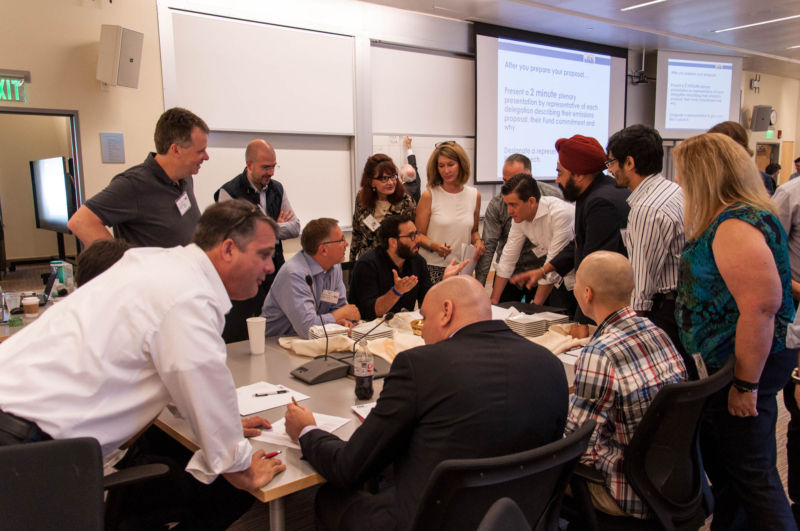Saving the world from climate change, one (pretend) UN at a time
Ars Technica 2017-06-26

Enlarge (credit: Scott K. Johnson)
CAMBRIDGE, Massachusetts—Some critics of the Paris Agreement on climate change probably think they could have done a better job with the agreement's details. Recently, a group of people taking a system dynamics course at MIT’s Sloan School of Management got the chance to take a whack at it.
Ars dropped in on a mock climate negotiation exercise run by MIT’s John Sterman, University of North Carolina’s Andrew Jones, and University of Massachusetts Lowell’s Juliette Rooney-Varga—the first time they’ve done one of these since President Trump announced his intent to pull the US out of the Paris Agreement. The simulated negotiation was informed by a display at the front of the room that showed the impact of the participants' pledged emissions reductions on climate change. In this case, the scoreboard was the same simple climate model that was used to facilitate the international negotiations in Copenhagen and Paris.
That model was developed in the late 1990s to simulate economic interactions with energy use and climate change, but it was adapted into a tool negotiators could use to quickly calculate the impacts of proposals. John Holdren—President Obama’s top science advisor—was keen on the model and ran it on his laptop during the negotiations that led to a bilateral agreement with China in 2014. And just before the Paris talks kicked off, top UN climate officials were running every what-if they could think of through the Climate Interactive model.